1 of 15
Downloaded 14 times
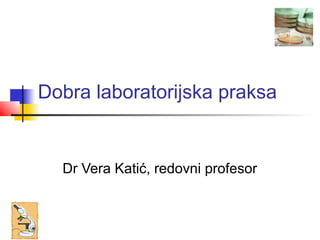
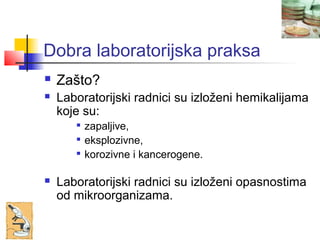
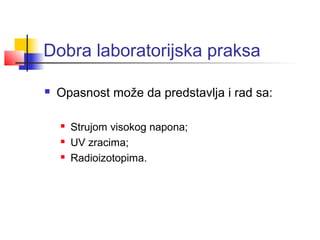
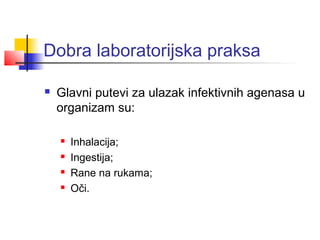

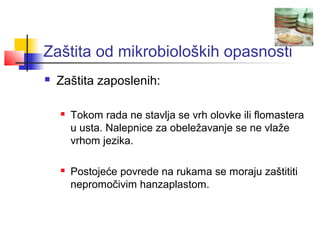


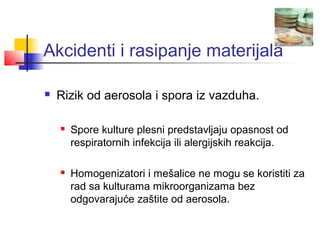
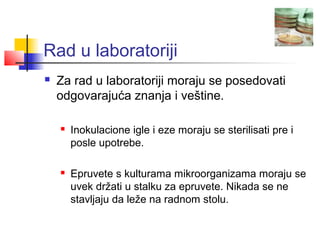
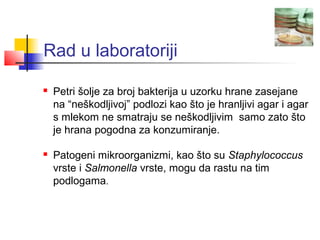
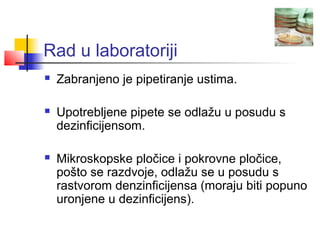
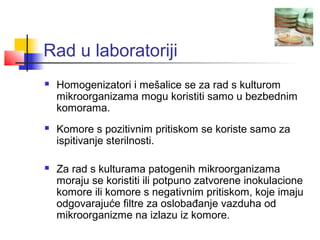
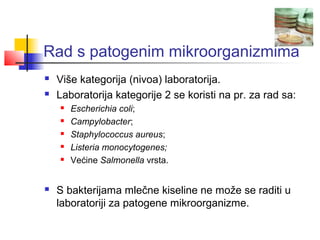

Ad
Recommended
–±–∏–æ–ª–æ–≥–∏—ò–∞ –∫–∞–æ –Ω–∞—É–∫–∞ –æ –∂–∏–≤–æ—Ç—É
–±–∏–æ–ª–æ–≥–∏—ò–∞ –∫–∞–æ –Ω–∞—É–∫–∞ –æ –∂–∏–≤–æ—Ç—É1kreativac
Ã˝
Проучавање биологије, лабораторија, лупа, микроскоп...Biologija - nauka o životu
Biologija - nauka o životuThe Little Art School "The Blue Bunny"
Ã˝
Biologija i njen značaj, biološke disciplineSimulating colonic survival of probiotics in single strain products as compar...
Simulating colonic survival of probiotics in single strain products as compar...Nutrition & Biosciences
Ã˝
This study evaluates the survival of probiotics in multi-strain products compared to single strains in an in vitro colon simulation. Results indicate that all probiotic strains could be detected after simulations, showing no significant differences in survival levels between single and multi-strain formulations. The findings suggest that multi-strain probiotics do not negatively affect each other's survival.Control of Microorganisms by Lowering pH (by Adding Organic Acids)
Control of Microorganisms by Lowering pH (by Adding Organic Acids)Amna Jalil
Ã˝
This document discusses methods for controlling microorganisms through lowering the pH, specifically by adding organic acids. It defines pH and explains how most microbes grow best around pH 7 but some bacteria can grow at pH lower than 4. Organic acids like sorbic acid, benzoic acid, acetic acid, and propionic acid are commonly used to lower the pH of foods and inhibit microbial growth. Their effective pH ranges are listed. The document also provides information on measuring pH and discusses how lowering pH through acidification or fermentation can preserve foods.Bacterial growth and pH
Bacterial growth and pHJeevan Kumar Shrestha
Ã˝
Bacteria regulate their internal pH through various mechanisms to survive in different external pH environments. The internal pH of cells is maintained near neutral through the use of buffers and ion pumps, even when the external pH is highly acidic or alkaline. Acidophilic bacteria can tolerate very low external pH levels down to 0 through specialized internal pH regulation. Neutrophilic bacteria have mechanisms to reduce effects of low external pH on their internal pH. Alkaliphilic bacteria maintain a slightly acidic internal pH despite living in high pH environments and also regulate internal pH through homeostasis.Chapter 3 Microbial growth
Chapter 3 Microbial growthMohamed Ali
Ã˝
Microbial growth involves an increase in cell numbers through cell division and reproduction. There are four phases of microbial growth: lag phase as cells adapt to their environment; log or exponential phase of rapid cell division; stationary phase as resources are depleted and growth balances mortality; and death phase as cells die off. Microbial growth is influenced by environmental factors like pH, temperature, gas availability, and pressure.Application Of Probiotic And Molases
Application Of Probiotic And MolasesBBAP takalar
Ã˝
(1) The study found that adding probiotics and molasses to the rearing media tended to accelerate the growth stages of swimming crab larvae, increase their survival rates, body weights and carapace lengths compared to probiotics alone, though the differences were not statistically significant. (2) The combination of probiotics and molasses also better controlled the populations of pathogenic Vibrio bacteria. (3Factors affecting the growth and survival of micro organisms in foods
Factors affecting the growth and survival of micro organisms in foodsMona Othman Albureikan / King Abdulaziz University
Ã˝
The document discusses factors that affect microbial growth in foods. It describes the microbial growth curve and identifies four main factors that influence growth: intrinsic properties of the food itself, extrinsic environmental conditions, implicit properties of microorganisms, and processing factors. Specific intrinsic factors discussed include nutrients, pH, water activity, and antimicrobial constituents. Extrinsic factors include temperature, relative humidity, and atmospheric gases. Implicit factors include microbial interactions like mutualism and antagonism. Microbial growth
Microbial growthShaina Mavreen Villaroza
Ã˝
This document discusses various topics relating to bacterial growth, including:
- Bacterial growth occurs through binary fission or budding, where a parent cell splits into two daughter cells. Generation time is the time required for a cell to divide.
- Bacterial growth can be measured directly through plate counts, which involve serial dilutions and counting colony-forming units, or indirectly through metabolic activity.
- Bacterial growth phases include a lag phase, log/exponential phase, stationary phase, and death phase.
- Bacteria have various physical and chemical requirements for growth, such as appropriate temperatures, pH levels, oxygen levels, carbon sources, and nutrients.
- Culture media such as solid and liquidBacterial Growth Factors
Bacterial Growth Factorsscuffruff
Ã˝
Factors affecting microbial growth include pH, moisture, nutrient content, oxygen, and light. pH is important as most bacteria grow best near neutral pH, and even small pH changes can greatly impact growth rates. Moisture is essential and bacteria require more moisture than yeasts or molds. Nutrient content must provide elements like carbon, nitrogen, and minerals for growth. Oxygen requirements differ between obligate aerobes that need oxygen, facultative anaerobes that grow with or without oxygen, and obligate anaerobes that cannot tolerate oxygen. Light is only essential for photoautotrophs.Microbial Growth
Microbial Growth rmasterson
Ã˝
This chapter discusses the requirements for microbial growth, including physical factors like temperature, pH, and osmotic pressure as well as chemical requirements like carbon, nitrogen, and oxygen. It also covers culture media that can be used to grow microbes in the lab, including nutrient broth, selective media, and differential media. The chapter describes how to obtain pure cultures using the streak plate method and calculates microbial generation time. It outlines the phases of a bacterial growth curve, including the lag, exponential, stationary, and death phases.Factors affecting the growth of microbes
Factors affecting the growth of microbesPrachi Gupta
Ã˝
This document discusses the physical factors that influence the growth of microorganisms, including temperature, pH, osmotic pressure, hydrostatic pressure, and radiation. It describes how each factor affects microbial growth and membranes. Temperature is the most important physical factor, as it can damage enzymes and membranes at extremes. Microbes are classified based on their optimal temperature ranges, such as psychrophiles, mesophiles, thermophiles, and hyperthermophiles. Optimal pH and osmotic pressure ranges also determine bacterial classifications like acidophiles, alkalophiles, halophiles, and osmotolerant microbes. Higher hydrostatic pressures and radiation can also impact microbial growth.Bacterial Growth
Bacterial Growthhowmed
Ã˝
The document discusses various factors that affect bacterial growth, including:
- Binary fission, where bacteria divide into two equal cells through asexual reproduction.
- Bacterial growth follows logarithmic or exponential growth, doubling with each cell division.
- Stages of bacterial growth are lag phase, log/exponential phase, stationary phase, and death phase.
- Classification of bacteria is based on nutrient requirements, temperature preferences, pH tolerance, and oxygen requirements, which all impact their growth rates.Probiotics1
Probiotics1Pooja1923
Ã˝
Probiotics are living microorganisms that provide health benefits when consumed in adequate amounts. They help maintain a healthy balance of bacteria in the gut and can aid in digestion, strengthen the immune system, and reduce risks of certain diseases. Common probiotic strains include Lactobacillus and Bifidobacterium species. Probiotics are available in foods like yogurt as well as supplements like tablets and capsules. Consuming probiotics may benefit those with digestive issues, weak immune systems, or frequent infections.IB IA Chemistry HL Lab
IB IA Chemistry HL LabAssia Chelaghma
Ã˝
1. The document describes an experiment to determine the equilibrium constant Kc for the esterification reaction of ethanoic acid and ethanol.
2. Initial concentrations of reactants and products were measured and the mixture was allowed to reach equilibrium. Samples were then titrated with sodium hydroxide and the volume added was used to calculate Kc.
3. The experimental value of Kc was found to be 4.80, which has a 20% error from the theoretical value of 4.07 given by the teacher. Sources of error are discussed.IB Chemistry HL IA Rate of reaction, Chemistry lab
IB Chemistry HL IA Rate of reaction, Chemistry labAssia Chelaghma
Ã˝
The document describes an experiment to determine how different concentrations of hydrochloric acid affect the rate of reaction with copper (II) powder. A colorimeter will be used to measure the absorbance of light by solutions containing copper (II) and hydrochloric acid over three minutes. Five concentrations of hydrochloric acid will react with 20g of copper (II) powder in separate trials. Variables like temperature, volume, and light intensity will be controlled. Absorbance readings will be taken and used to calculate the order of reaction and compare how concentration impacts the rate. The experiment will be repeated three times for each concentration to collect sufficient data.12.p h
12.p hMaja Andjelkovic
Ã˝
The document discusses pH and its impact on microorganisms. It defines pH as the negative logarithm of hydrogen ion concentration and describes the pH scale. It provides examples of the optimal and tolerated pH ranges for various bacteria, and discusses how pH affects the growth and development of different groups of microorganisms in foods. It also gives approximate pH values of various foods and explains how other environmental factors can interact with pH to impact microorganism growth.More Related Content
Viewers also liked (12)
Bacterial growth and pH
Bacterial growth and pHJeevan Kumar Shrestha
Ã˝
Bacteria regulate their internal pH through various mechanisms to survive in different external pH environments. The internal pH of cells is maintained near neutral through the use of buffers and ion pumps, even when the external pH is highly acidic or alkaline. Acidophilic bacteria can tolerate very low external pH levels down to 0 through specialized internal pH regulation. Neutrophilic bacteria have mechanisms to reduce effects of low external pH on their internal pH. Alkaliphilic bacteria maintain a slightly acidic internal pH despite living in high pH environments and also regulate internal pH through homeostasis.Chapter 3 Microbial growth
Chapter 3 Microbial growthMohamed Ali
Ã˝
Microbial growth involves an increase in cell numbers through cell division and reproduction. There are four phases of microbial growth: lag phase as cells adapt to their environment; log or exponential phase of rapid cell division; stationary phase as resources are depleted and growth balances mortality; and death phase as cells die off. Microbial growth is influenced by environmental factors like pH, temperature, gas availability, and pressure.Application Of Probiotic And Molases
Application Of Probiotic And MolasesBBAP takalar
Ã˝
(1) The study found that adding probiotics and molasses to the rearing media tended to accelerate the growth stages of swimming crab larvae, increase their survival rates, body weights and carapace lengths compared to probiotics alone, though the differences were not statistically significant. (2) The combination of probiotics and molasses also better controlled the populations of pathogenic Vibrio bacteria. (3Factors affecting the growth and survival of micro organisms in foods
Factors affecting the growth and survival of micro organisms in foodsMona Othman Albureikan / King Abdulaziz University
Ã˝
The document discusses factors that affect microbial growth in foods. It describes the microbial growth curve and identifies four main factors that influence growth: intrinsic properties of the food itself, extrinsic environmental conditions, implicit properties of microorganisms, and processing factors. Specific intrinsic factors discussed include nutrients, pH, water activity, and antimicrobial constituents. Extrinsic factors include temperature, relative humidity, and atmospheric gases. Implicit factors include microbial interactions like mutualism and antagonism. Microbial growth
Microbial growthShaina Mavreen Villaroza
Ã˝
This document discusses various topics relating to bacterial growth, including:
- Bacterial growth occurs through binary fission or budding, where a parent cell splits into two daughter cells. Generation time is the time required for a cell to divide.
- Bacterial growth can be measured directly through plate counts, which involve serial dilutions and counting colony-forming units, or indirectly through metabolic activity.
- Bacterial growth phases include a lag phase, log/exponential phase, stationary phase, and death phase.
- Bacteria have various physical and chemical requirements for growth, such as appropriate temperatures, pH levels, oxygen levels, carbon sources, and nutrients.
- Culture media such as solid and liquidBacterial Growth Factors
Bacterial Growth Factorsscuffruff
Ã˝
Factors affecting microbial growth include pH, moisture, nutrient content, oxygen, and light. pH is important as most bacteria grow best near neutral pH, and even small pH changes can greatly impact growth rates. Moisture is essential and bacteria require more moisture than yeasts or molds. Nutrient content must provide elements like carbon, nitrogen, and minerals for growth. Oxygen requirements differ between obligate aerobes that need oxygen, facultative anaerobes that grow with or without oxygen, and obligate anaerobes that cannot tolerate oxygen. Light is only essential for photoautotrophs.Microbial Growth
Microbial Growth rmasterson
Ã˝
This chapter discusses the requirements for microbial growth, including physical factors like temperature, pH, and osmotic pressure as well as chemical requirements like carbon, nitrogen, and oxygen. It also covers culture media that can be used to grow microbes in the lab, including nutrient broth, selective media, and differential media. The chapter describes how to obtain pure cultures using the streak plate method and calculates microbial generation time. It outlines the phases of a bacterial growth curve, including the lag, exponential, stationary, and death phases.Factors affecting the growth of microbes
Factors affecting the growth of microbesPrachi Gupta
Ã˝
This document discusses the physical factors that influence the growth of microorganisms, including temperature, pH, osmotic pressure, hydrostatic pressure, and radiation. It describes how each factor affects microbial growth and membranes. Temperature is the most important physical factor, as it can damage enzymes and membranes at extremes. Microbes are classified based on their optimal temperature ranges, such as psychrophiles, mesophiles, thermophiles, and hyperthermophiles. Optimal pH and osmotic pressure ranges also determine bacterial classifications like acidophiles, alkalophiles, halophiles, and osmotolerant microbes. Higher hydrostatic pressures and radiation can also impact microbial growth.Bacterial Growth
Bacterial Growthhowmed
Ã˝
The document discusses various factors that affect bacterial growth, including:
- Binary fission, where bacteria divide into two equal cells through asexual reproduction.
- Bacterial growth follows logarithmic or exponential growth, doubling with each cell division.
- Stages of bacterial growth are lag phase, log/exponential phase, stationary phase, and death phase.
- Classification of bacteria is based on nutrient requirements, temperature preferences, pH tolerance, and oxygen requirements, which all impact their growth rates.Probiotics1
Probiotics1Pooja1923
Ã˝
Probiotics are living microorganisms that provide health benefits when consumed in adequate amounts. They help maintain a healthy balance of bacteria in the gut and can aid in digestion, strengthen the immune system, and reduce risks of certain diseases. Common probiotic strains include Lactobacillus and Bifidobacterium species. Probiotics are available in foods like yogurt as well as supplements like tablets and capsules. Consuming probiotics may benefit those with digestive issues, weak immune systems, or frequent infections.IB IA Chemistry HL Lab
IB IA Chemistry HL LabAssia Chelaghma
Ã˝
1. The document describes an experiment to determine the equilibrium constant Kc for the esterification reaction of ethanoic acid and ethanol.
2. Initial concentrations of reactants and products were measured and the mixture was allowed to reach equilibrium. Samples were then titrated with sodium hydroxide and the volume added was used to calculate Kc.
3. The experimental value of Kc was found to be 4.80, which has a 20% error from the theoretical value of 4.07 given by the teacher. Sources of error are discussed.IB Chemistry HL IA Rate of reaction, Chemistry lab
IB Chemistry HL IA Rate of reaction, Chemistry labAssia Chelaghma
Ã˝
The document describes an experiment to determine how different concentrations of hydrochloric acid affect the rate of reaction with copper (II) powder. A colorimeter will be used to measure the absorbance of light by solutions containing copper (II) and hydrochloric acid over three minutes. Five concentrations of hydrochloric acid will react with 20g of copper (II) powder in separate trials. Variables like temperature, volume, and light intensity will be controlled. Absorbance readings will be taken and used to calculate the order of reaction and compare how concentration impacts the rate. The experiment will be repeated three times for each concentration to collect sufficient data.Factors affecting the growth and survival of micro organisms in foods
Factors affecting the growth and survival of micro organisms in foodsMona Othman Albureikan / King Abdulaziz University
Ã˝
More from Maja Andjelkovic (20)
12.p h
12.p hMaja Andjelkovic
Ã˝
The document discusses pH and its impact on microorganisms. It defines pH as the negative logarithm of hydrogen ion concentration and describes the pH scale. It provides examples of the optimal and tolerated pH ranges for various bacteria, and discusses how pH affects the growth and development of different groups of microorganisms in foods. It also gives approximate pH values of various foods and explains how other environmental factors can interact with pH to impact microorganism growth.15.uticaj procesnih parametara na rast i razmnožavanje
15.uticaj procesnih parametara na rast i razmnožavanjeMaja Andjelkovic
Ã˝
Temperature is a key process factor that affects microbial growth and reproduction in foods. Microorganisms have three cardinal temperatures - minimum, optimum, and maximum temperatures - for growth. The optimum temperature for the growth of most pathogenic and spoilage microorganisms in foods is around 30°C.12.predavanje-faktori okoline ekstrinzički temp
12.predavanje-faktori okoline ekstrinzički tempMaja Andjelkovic
Ã˝
The document discusses various extrinsic environmental factors that affect the growth of microorganisms, with a focus on temperature. It describes how microorganisms can be classified based on their optimal temperature ranges for growth, including psychrophiles, mesophiles, and thermophiles. The effects of temperature on microbial physiology and metabolism are explored, as well as its implications for food storage and safety.11.predavanje-redoks potencijal (eh)
11.predavanje-redoks potencijal (eh)Maja Andjelkovic
Ã˝
Redox potential (Eh) is a physicochemical concept that reflects the ratio of oxidized and reduced forms of metabolites in a substrate. It acts selectively on the development of microorganisms in foods. Eh is expressed as a Eh-value, which is actually a measure of the oxidizing or reducing power of a chemical system. Reductions and oxidations are inseparable processes based on the transfer of electrons from one material to another. Materials that easily release electrons are good reducing agents, and those that easily accept electrons are good oxidizing agents. The redox potential of a substrate depends on pH, chemical composition, presence and mutual relationship of reductive (SH groups of proteins, hydrogen sulfide, ascorbic acid10.predavanje-aktivnost vode
10.predavanje-aktivnost vodeMaja Andjelkovic
Ã˝
The document discusses water activity (aw), which is an important factor that determines the development of microorganisms. aw represents the available water content in a substrate that microorganisms can use for their metabolic activity. It is defined as the ratio between the equilibrium vapor pressure of water in a food and the vapor pressure of saturated water vapor at the same temperature. aw values range from 0-1 and influence the growth and toxin production of various microorganisms. Foods are categorized based on their aw values as high, intermediate, or low moisture foods.9.predavanje-pH
9.predavanje-pHMaja Andjelkovic
Ã˝
The document discusses pH and its impact on microorganisms. It defines pH as the negative logarithm of hydrogen ion concentration and describes the pH scale. It provides examples of the optimal and tolerated pH ranges for various bacteria, and discusses how pH affects the growth and development of different groups of microorganisms in foods. It also gives approximate pH values of various foods, meats, seafoods, and dairy products.8. predavanje-proteoliticka aktivnos tmikroorganizama
8. predavanje-proteoliticka aktivnos tmikroorganizamaMaja Andjelkovic
Ã˝
This document discusses nutrient utilization and microbial growth. It summarizes that microorganisms require nutrient-rich mediums containing amino acids and vitamins for growth. Milk contains low levels of free amino acids and peptides, so microbes have developed complex proteolytic systems to break down milk proteins into usable peptides and amino acids. These systems include extracellular proteinases and intracellular peptidases that hydrolyze proteins and peptides. The proteolytic system allows microbes to obtain essential amino acids needed for growth.7.predavanje-razvoj mikroorganizama nutrijenti
7.predavanje-razvoj mikroorganizama nutrijentiMaja Andjelkovic
Ã˝
This document discusses the nutrients and conditions needed for the growth of microorganisms in foods. It notes that microbes break down proteins, fats, and carbohydrates in foods and can produce beneficial or harmful compounds. Under favorable conditions like sufficient nutrients and proper storage, microbe populations can increase exponentially to 107 cells/g within 8 hours. Controlling intrinsic factors such as pH, water activity, and antimicrobial components is important for microbiological control of foods.6.predavanje-razvoj mikroorganizama interakcija
6.predavanje-razvoj mikroorganizama interakcijaMaja Andjelkovic
Ã˝
This document discusses factors that influence the growth and development of microorganisms in food, including intrinsic, extrinsic, and implicit factors. Implicit factors relate to the microorganisms themselves, such as initial number, growth phases/reproduction rate, and interactions. A higher initial number of microorganisms and species adapted to the substrate and environment conditions allows for faster adaptation. Faster reproduction rates, represented by shorter generation times, also allow for more rapid growth under favorable conditions. Unfavorable substrate conditions prolong the generation time for all microorganisms.Ad
1.dobra laboratorijska praksa
- 1. Dobra laboratorijska praksa Dr Vera Katić, redovni profesor
- 2. Dobra laboratorijska praksa  Zašto?  Laboratorijski radnici su izloženi hemikalijama koje su:  zapaljive,  eksplozivne,  korozivne i kancerogene.  Laboratorijski radnici su izloženi opasnostima od mikroorganizama.
- 3. Dobra laboratorijska praksa  Opasnost može da predstavlja i rad sa:  Strujom visokog napona;  UV zracima;  Radioizotopima.
- 4. Dobra laboratorijska praksa  Glavni putevi za ulazak infektivnih agenasa u organizam su:  Inhalacija;  Ingestija;  Rane na rukama;  Oči.
- 5. Zaštita od mikrobioloških opasnosti  Zaštita zaposlenih:  U laboratoriji se mora nositi radni mantil.  Posle upotrebe radni mantil se pre pranja autoklavira.  Tokom rada s patogenim mikroorganizmima nose se rukavice za jednokratnu upotrebu, koje se posle upotrebe autoklaviraju.  U laboratoriji je zabranjeno da se: puši, pije, jede i žvaće žvakaća guma.
- 6. Zaštita od mikrobioloških opasnosti  Zaštita zaposlenih:  Tokom rada ne stavlja se vrh olovke ili flomastera u usta. Nalepnice za obeležavanje se ne vlaže vrhom jezika.  Postojeće povrede na rukama se moraju zaštititi nepromočivim hanzaplastom.
- 7. Akcidenti i rasipanje materijala  Prosute kulture mikroorganizama treba preliti odgovarajućim dezinficijensom i ostaviti 10- 15 min pre pranja površine.  Dezinfikovanu površinu treba vidno obeležiti.  Slomljeno staklo treba sakupiti pincetom u posudu i autoklavirati.
- 8. Akcidenti i rasipanje materijala  Rizik od aerosola i spora iz vazduha.  Kada može nastati aerosol?  pri naglom izduvavanju sadržaja iz pipete;  pri korišćenju eze;  pri skidanju zatvarača sa epruvete.
- 9. Akcidenti i rasipanje materijala  Rizik od aerosola i spora iz vazduha.  Spore kulture plesni predstavljaju opasnost od respiratornih infekcija ili alergijskih reakcija.  Homogenizatori i mešalice ne mogu se koristiti za rad sa kulturama mikroorganizama bez odgovarajuće zaštite od aerosola.
- 10. Rad u laboratoriji  Za rad u laboratoriji moraju se posedovati odgovarajuća znanja i veštine.  Inokulacione igle i eze moraju se sterilisati pre i posle upotrebe.  Epruvete s kulturama mikroorganizama moraju se uvek držati u stalku za epruvete. Nikada se ne stavljaju da leže na radnom stolu.
- 11. Rad u laboratoriji  Petri šolje za broj bakterija u uzorku hrane zasejane na “neškodljivoj” podlozi kao što je hranljivi agar i agar s mlekom ne smatraju se neškodljivim samo zato što je hrana pogodna za konzumiranje.  Patogeni mikroorganizmi, kao što su Staphylococcus vrste i Salmonella vrste, mogu da rastu na tim podlogama.
- 12. Rad u laboratoriji  Zabranjeno je pipetiranje ustima.  Upotrebljene pipete se odlažu u posudu s dezinficijensom.  Mikroskopske pločice i pokrovne pločice, pošto se razdvoje, odlažu se u posudu s rastvorom denzinficijensa (moraju biti popuno uronjene u dezinficijens).
- 13. Rad u laboratoriji  Homogenizatori i mešalice se za rad s kulturom mikroorganizama mogu koristiti samo u bezbednim komorama.  Komore s pozitivnim pritiskom se koriste samo za ispitivanje sterilnosti.  Za rad s kulturama patogenih mikroorganizama moraju se koristiti ili potpuno zatvorene inokulacione komore ili komore s negativnim pritiskom, koje imaju odgovarajuće filtre za oslobađanje vazduha od mikroorganizme na izlazu iz komore.
- 14. Rad s patogenim mikroorganizmima  Više kategorija (nivoa) laboratorija.  Laboratorija kategorije 2 se koristi na pr. za rad sa:  Escherichia coli;  Campylobacter;  Staphylococcus aureus;  Listeria monocytogenes;  Većine Salmonella vrsta.  S bakterijama mlečne kiseline ne može se raditi u laboratoriji za patogene mikroorganizme.
- 15. Postupak pri napuštanju laboratorije  Posle završenog rada u laboratoriji očisti se radni prostor.  Upotrebljeni pribor i kulture, koji više ne trebaju ne ostavljaju se na radnom stolu, već se odlažu na način predviđen za dekontaminaciju.  Radna površina se prebriše rastvorom dezinficijensa.  Ruke se dobro operu.
